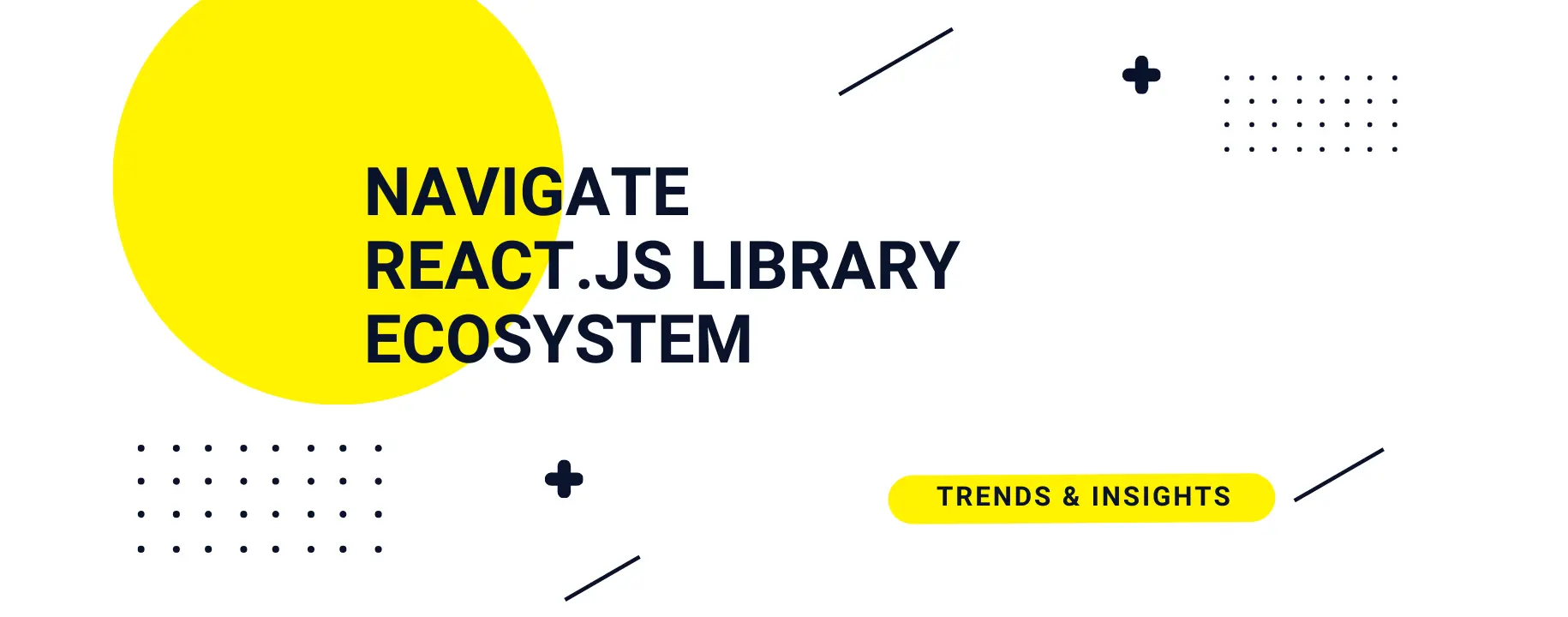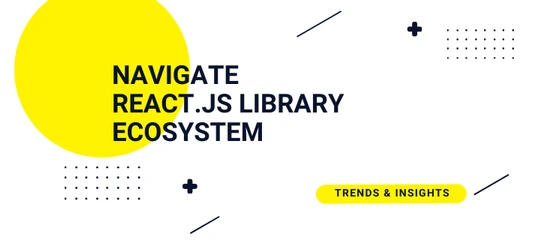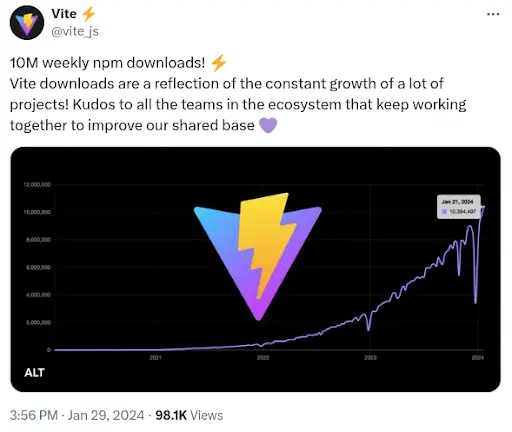- For developers
- Product development
- 16 Apr 2024
React.js library trends and ecosystem in 2024: Front-End development frameworks
This article explores the most important tools and software technology trends.



Table of contents
- React.js trends and its ecosystem in 2024
- Effortless prototyping and project setup
- Mastering state with Redux Toolkit and Zustand
- React Router and TanStack Router
- Advanced Application Styling: Using Tailwind CSS
- Simplifying forms with React Hook Form and Formik
- Testing with Jest, Vitest, and React Testing Library
- Conclusion
Contributors

React.js trends and its ecosystem in 2024
React.js library continues to be a vital resource for web developers, offering a wide range of tools and libraries tailored to various project needs. From simple prototyping to advanced state management and styling options, React’s flexibility truly stands out.
This article explores the most important tools and software technology trends, offering a clear path through React’s plentiful resources. It helps you find the best tools for your projects or stay in touch with software development industry trends when preparing for technical interviews.
Effortless prototyping and project setup
Beginners often overlook that for quick prototyping, testing ideas, or sharing code snippets, setting up a local environment isn’t always necessary. Tools like CodeSandbox and StackBlitz have transformed the approach to these tasks.
Instant Browser-Based Development
These tools offer an environment that requires no setup. This allows you to begin creating, testing, and sharing React projects immediately. Everything can be done directly through your web browser.
Moving to Full-Scale Development
As projects transition to full-scale development, selecting the right setup becomes crucial. Create-react-app is no longer maintained and should not be relied upon for new projects.
Vite for SPA Development
Vite emerges as a superior choice for Single Page Application (SPA) development. It’s known for its templates, rapid server start, and optimized production builds, offering a streamlined development experience.
Vite’s Development Features
Vite enhances the development workflow with features like instant module reloading and built-in TypeScript support. Its plugin system also makes it easy to integrate with a wide variety of web development tools.
Next.js for Server-Side Rendering (SSR)
For applications that require Server-Side Rendering (SSR), Next.js is the go-to framework. It offers powerful features like automatic routing and static site generation (SSG), simplifying the development process for more complex applications.
 Source: https://twitter.com/vite_js/status/1751967627482661255
Source: https://twitter.com/vite_js/status/1751967627482661255
Mastering state with Redux Toolkit and Zustand
State management is the cornerstone of React.js library development. Redux Toolkit simplifies state management in larger applications, reducing boilerplate and integrating seamlessly with Redux’s robust ecosystem. For simpler or more minimalist projects, Zustand offers an easy-to-use alternative, focusing on a straightforward and flexible approach to state handling.
For server-side needs, tools like RTK Query, Tanstack Query (React Query), and Apollo Client offer powerful solutions for data fetching, caching, and synchronization. Apollo Client is ideal for GraphQL projects, while RTK Query pairs well with Redux.
 Source: https://github.com/pmndrs/zustand
Source: https://github.com/pmndrs/zustand
React Router and TanStack Router
Routing is essential for SPA navigation, and React Router remains the standard with its dynamic route matching and comprehensive feature set.
TanStack Router presents a lightweight alternative, offering performance and simplicity for projects with streamlined routing needs.
Advanced Application Styling: Using Tailwind CSS
Tailwind CSS appeals to developers looking for a utility-first CSS framework, enabling rapid UI development without the need to write custom CSS. For developers who prefer CSS-in-JS solutions, Styled Components and Emotion provide powerful tools for scoped styles and dynamic theming. These libraries help create highly customizable and maintainable applications.
Front end UI framework & UI Kits
UI component libraries like Material UI, Ant Design, Chakra UI, and Mantine provide pre-built components that accelerate development. Headless front-end UI frameworks are becoming increasingly popular. They prioritize accessibility and flexibility by offering unstyled components, perfect for projects that need custom designs.
Animations
React Spring and Framer Motion allow developers to easily add sophisticated animations to React applications. These tools enhance user interaction and engagement by creating smooth and natural motion.
Simplifying forms with React Hook Form and Formik
Form management is made more efficient with React.js library tools like React Hook Form and Formik. These libraries simplify handling forms, performing validation, and managing submissions, enhancing both development efficiency and user experience.
In 2024, React Hook Form has become the preferred React.js library for form management due to its minimal boilerplate code compared to Formik, making it a more streamlined option for developers.
Testing with Jest, Vitest, and React Testing Library
Testing ensures application reliability and performance. Jest offers a comprehensive solution for unit testing, while Vitest emerges as a fast alternative leveraging Vite.
For component testing, the React Testing Library encourages practices that ensure maintainability and user-focused testing.
Conclusion
The React ecosystem in 2024 shows how much the community values new ideas and quality.
With a variety of top front-end libraries, developers can handle projects from simple SPAs to complex applications.
By using the right tools for setup, state management, styling, and testing, developers can build functional, robust, and user-friendly applications.
This guide helps developers navigate React development, making informed decisions to create outstanding web experiences.
10 NLP examples you use every day without realizing
12 Natural Language Processing techniques used to process text by data scientists
What is natural language generation? (NLG)